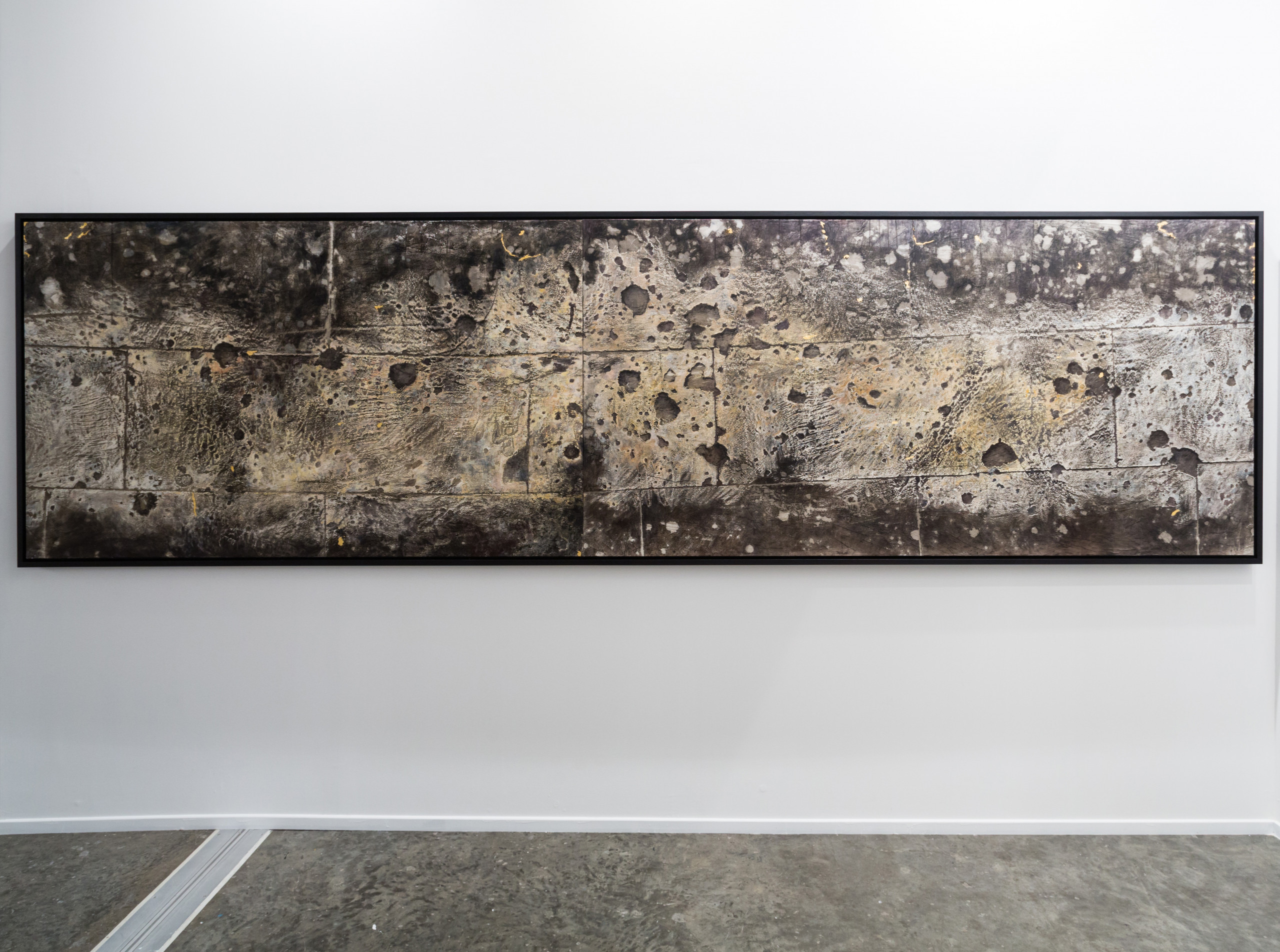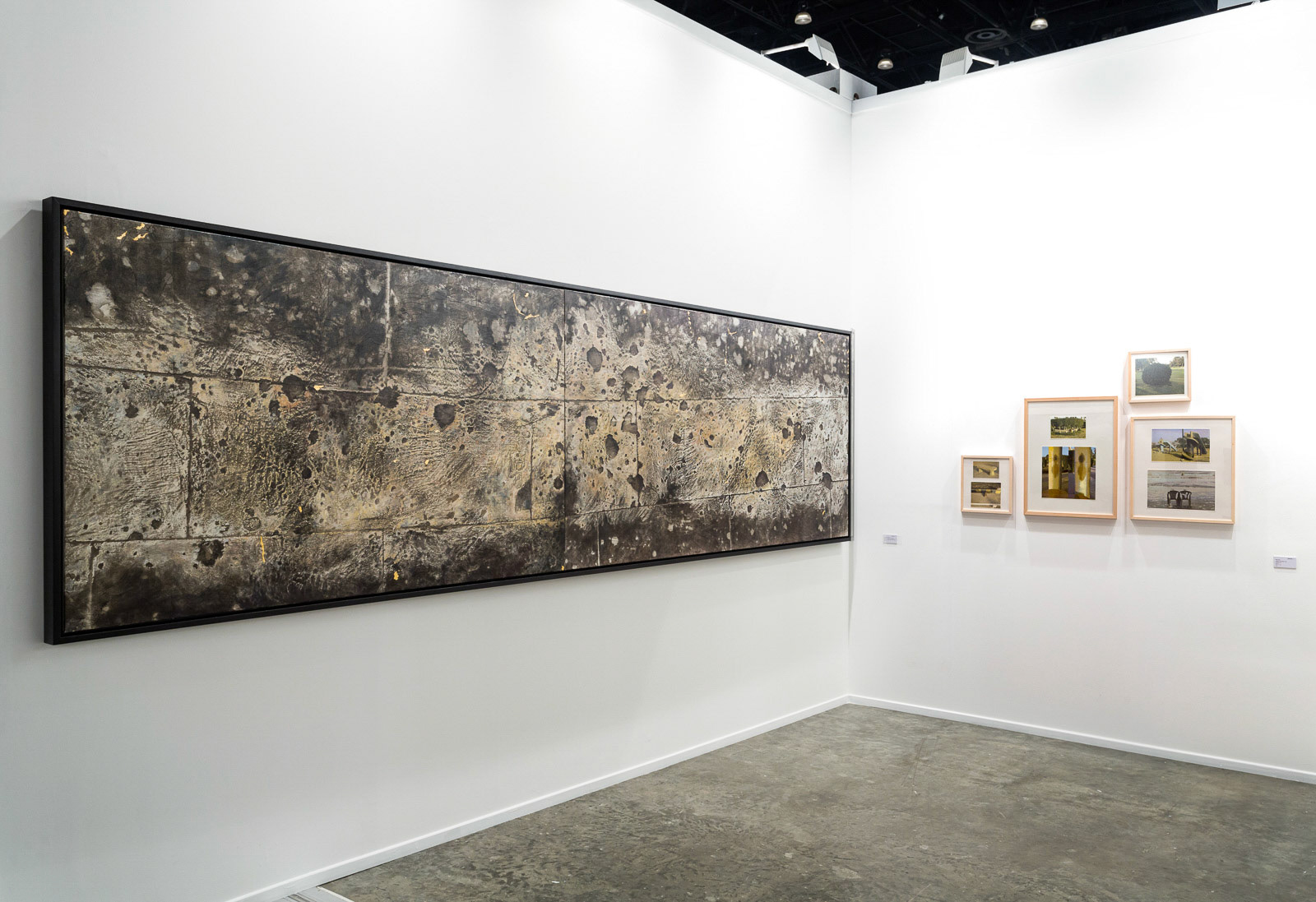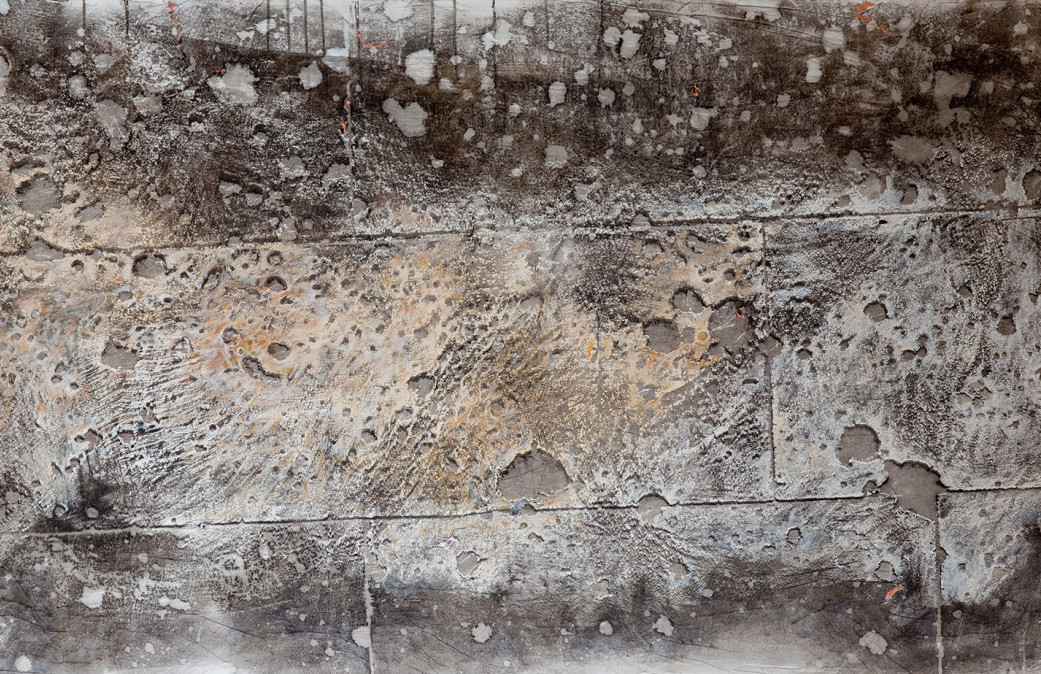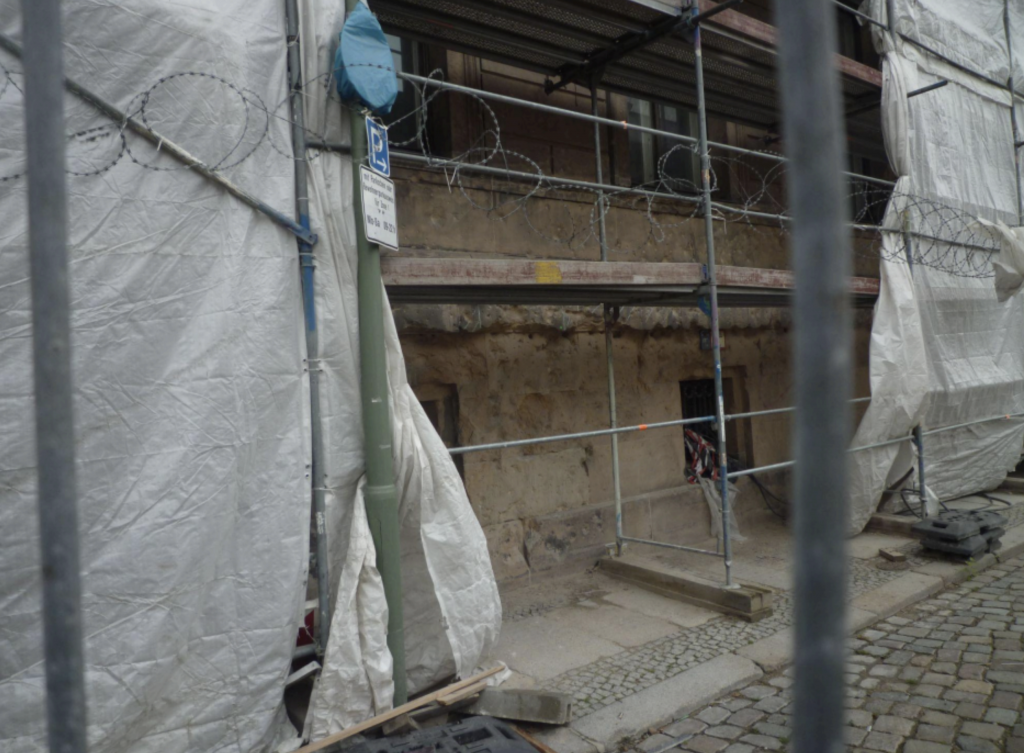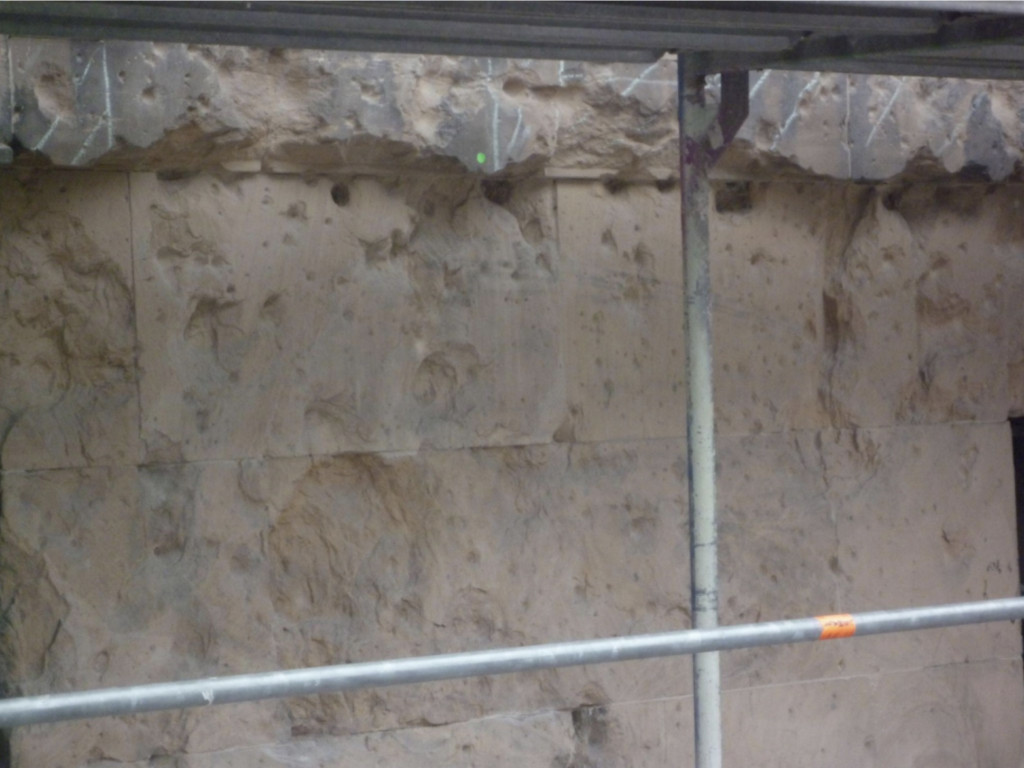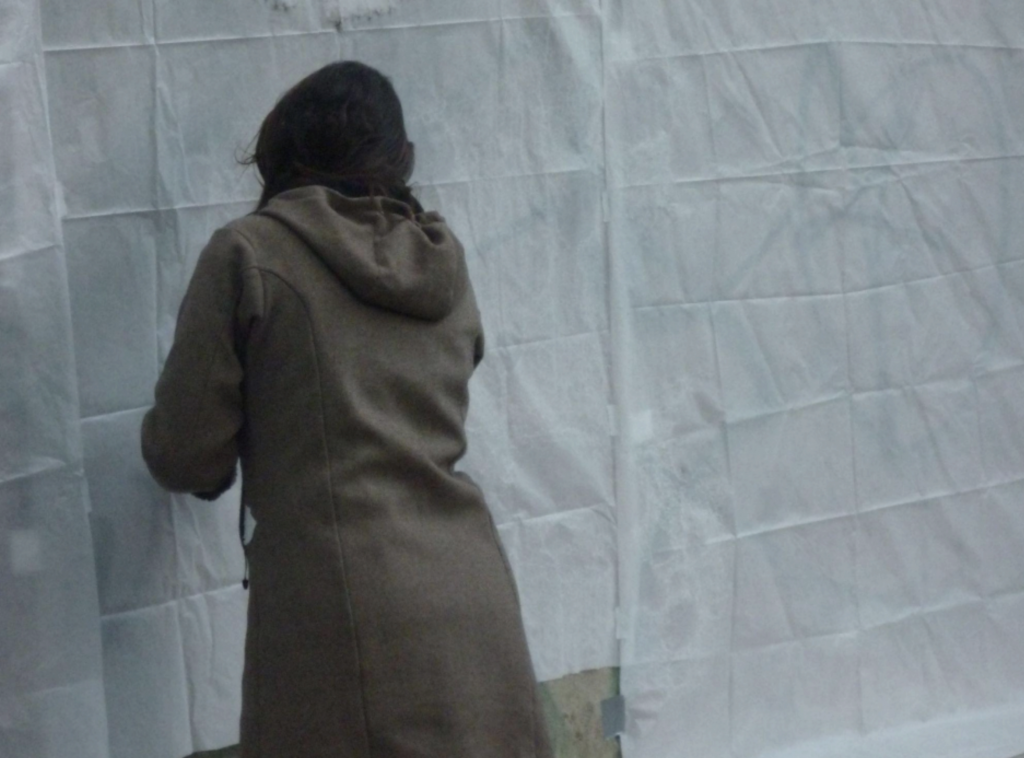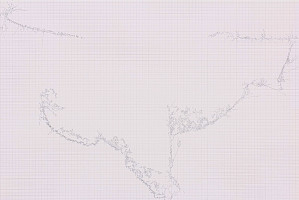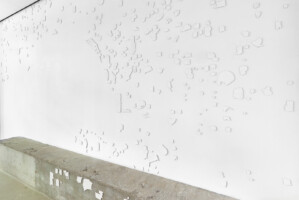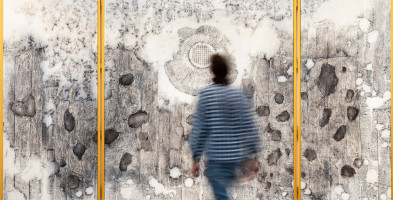The townhouse, with reduced colours and precise geometry, became a symbol of the erasure of the memory of the last days of the war, fossilized in bullet-eaten ornaments. The once experimental galleries had long since established themselves on the market, and the exhibition venues and clubs became institutions. The boiling point was exceeded, and the power of the post-wall-years evaporated. It did not last long until the engraved traces of a troubling and violent past and some rubbles of current events got cleaned up. The thorns in the flesh of a living present and those who recognized themselves in them, artists, punks and poets, slowly moved out and made a place for lawyers, politicians, IT developers and lobbyists. These new groups of residents changed the streets of Berlin Mitte. At this time, when the traces of the past were still visible, but the urge for a refined future had already become inevitable, the work on Off the Wall—Am Kupfergraben began. The diptych is one of the first transfer prints in Kaabi-Linke’s work that captures the blossom-like ornaments of acts of violence on the facades of buildings. The painting is a silent witness to the street fighting during World War II’s last days. Somehow, it makes sense that the damages look like flowers as each bullet and shrapnel that hit the stony walls failed to take a life. These lithified traces of war that people tend to overlook and ignore are, in a certain way of looking at it, the only beauty and the hidden hope of this tragedy.
In contrast to the chaos of violence are the horizontal joints of the massive stone blocks stacked on top of each other in ancient Roman architecture. While the firm and huge stones withstood the horrors of Allied air raids, the convex lines dropping a bit towards the centre of the painting reveal the work and nature of the sandy Prussian soil slowly swallowing the masonry in the basements of the buildings. In this sense, this work, which began early, is in close dialogue with works created at the same time and later, such as Am Hegelplatz (2009), Sniper (2014), Sepulcher (2014), and The Altarpiece (2015), which also deal with the thematic complex of absurd violence, chaos and stability and thus represent a core theme of German history.
What connects these and other works by Kaabi-Linke is not the logic of a damage protocol. It is not about documenting the pathology of former events. Instead, there is a dialectical motive behind it: every state of emergency is doomed to eventually perish due to the banality of everyday life. The American art historian Jessica Chen has drawn attention to this dialectic of images. She describes the transfer prints as tilting images that reverse the traditional understanding of light and darkness. “By excavating the previously neglected trace [Kaabi-Linke] proposes that one’s blind spot is not the obstruction of light but the failure to detect the darkness.” In other words, it is about a deeply human message of hope implicit in every trace of damage, penetrating the traumatic darkness of war memories like a shimmer of golden light. This hope arises from the simple truth that every bullet caught by the masonry has missed its human target.
